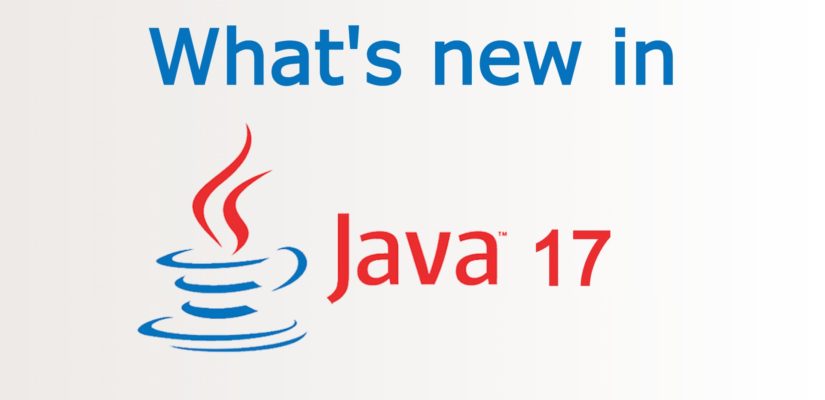
JDK 17 Arrived: What are the new Features in Java 17 for Enterprise Applications?
Oracle has announced the general availability of JDK 17. This is the eighth Feature Release through the six-month release cycle. This level of delivery helps Java Development Services to easily manage the adoption of innovation thanks to a continuous flow of expected changes.
Java’s ability to improve performance, stability and security makes it the world’s most popular programming language. As per a popular survey over ten million developers, representing 75% of full-time developers worldwide, use Java as their core language.
JDK 17 is now available
Oracle has released JDK 17 for developers, end-users, as well as enterprises. As an LTS release, JDK 17 will get performance, stability, and security updates following the Oracle Critical Patch Update (CPU) schedule.
Java 17 is the second long-term support (LTS) under the release cycle launched in 2018. Oracle has announced to shorten the time between future LTS releases, so the possible LTS to be Java 21 in September of 2023.
Another important change from JDK 16 in Oracle JDK 17 is simple license terms allowing companies to use it, including the quarterly performance, stability, and security patches, at no cost. Java SE Subscribers get access to Java SE Support and commercial features including GraalVM Enterprise, Java Management Service, and the Advanced Management Console.
So, what’s in store for the ones waiting to jump on the Java 17 train?
Java 17 Features
1. macOS on AArch64 Support
One of the major JVM features added is the support for macOS on AArch64architecture with JEP 391, thus offering support for the new line of CPUs (M1) Apple released with their devices last year. For people working on these platforms, this is not exactly news, as several vendors have already released versions of the JDK supporting this architecture. Nevertheless, official approval is still crucial for future maintenance and support for the platform.
2. Sealed Classes
The Sealed Classes feature has completed its preview phase and is now a core part of the language and platform as of Java 17. Sealed Classes helps a developer to smoothly declare the permitted sub-types of a type, thus stopping others from unintendedly extending or implementing it.
3. Encapsulate JDK Internals
It is not possible to relax the strong encapsulation of internal elements via a single command-line option, as was present in JDK 9 through JDK 16. This change removes by default all but a few important internal APIs including `sun. misc.Unsafe. It is still possible to access existing internal APIs, but this will now need enumerating, as command-line parameters or JAR-file manifest attributes, each package on which encapsulation must be relaxed. The change will offer advanced applications and fewer dependencies on non-standard internal implementations.
4. Vector API
The Vector API is going through the second incubator phase. This API helps developers to express vector computation that the JIT compiler compiles to the appropriate vector instructions supported by the CPU architecture the JVM is working on. Usually, a developer would either have to rely on scalar operations or develop platform-specific native libraries. Implementing the Vector API in Java enables a graceful fallback for things that the current architecture doesn’t have the important instructions for, and rather must fall back to be computed in a different manner.
5. Foreign Function & Memory API
Another Java 17 feature to explore is the Foreign Function & Memory API, which is basically a merger and evolution of two previous incubator modules from Java 16. This combination allows for a way to access native code and memory, using statically-typed code written in Java, with the objective of being able to replace the use of JNI in such scenarios.
Most developers are aware of the Memory API when it was first introduced as an incubator module. Since then, improvements are made to the API, consisting of support for shared regions and a separation between the MemorySegment and MemoryAddress interfaces.
Frequently Asked Questions
1. What will be in Java 17?
Along with Java 17’s release, Oracle is updating Java Management Service with new language enhancements, library updates, Support for Apple M1 Silicon, and removal and deprecation of legacy features. Other enhancements in Java 17 include a macOS/AArch64 port, a new macOS rendering pipeline, sealed classes, and more.
2. What is Java programming?
Java is a general-purpose programming language that is concurrent, class-based, object-oriented, and particularly designed to have as few dependencies. A virtual machine, called the Java Virtual Machine (JVM), is used to run the byte code on every platform.
3. Why is Java used for Web applications?
Java is the first name that can be used for building complex web applications and for the software platform that used this programming language. It is widely used by development companies to build secure, robust, and scalable web applications.
4. How much does it cost to develop a web application?
The cost of web application development is calculated on the basis of features and functionality that needs to be integrated within.
5. What is a Java Web application?
A Java web application is a collection of dynamic resources and static resources. A Java web application is easily deployed as a Web Archive file.
Wrapping Up:
In Java 17, there are some remarkable features and updates that help developers in web application development. For example, Java 17 feature introduces macOS on AArch64, sealed classes which to build amazing applications. All these features make it a perfect choice for Java J2ee development and other development activities. You can hire Java developers to meet your business web application development requirement. They will give you the proper solutions to take your business to next level.

